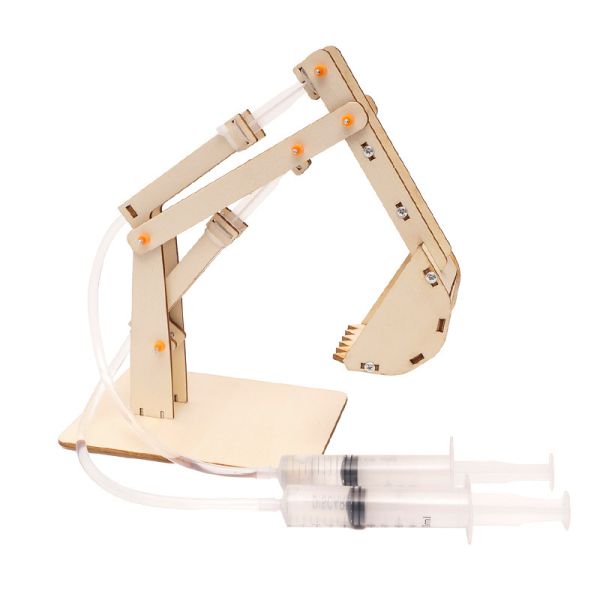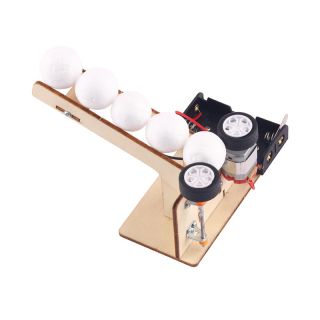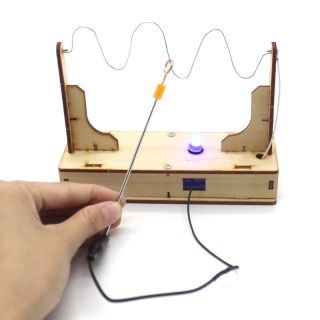All Categories
Demo Hydraulic Excavator Kit - Cat# 80-50-W143
In stock
SKU
Demo Hydraulic Excavator Kit - Cat# 80-50-W143
CA$10.00
- Buy 2 for CA$9.15 each and save 9%
- Buy 6 for CA$8.35 each and save 17%
Demo Hydraulic Excavator Kit — A Hands-On STEM Experience
Bring fluid power and mechanical motion into your classroom with the Demo Hydraulic Excavator Kit. Students build a working excavator model that operates via hydraulic force, giving them a tactile, visual way to explore hydraulics, mechanics, and design thinking. This kit — part of Kidder’s hydraulics series — is ideal for makerspaces, STEM labs, or project-based learning.
What’s in the Kit & How It Works
The kit provides structural parts, pivot joints, hydraulic syringes, tubing, connectors, and a detailed instruction guide.
Students assemble the excavator’s base, arm, boom, bucket, and hydraulic cylinders (syringes connected via tubing).
By pushing or pulling one syringe (input), fluid transmits pressure through the tubing to another (output), moving the excavator arm or bucket. This demonstrates Pascal’s principle and how hydraulic systems multiply or transfer force.
Learners can control the speed, direction, and smoothness of motion by adjusting fluid flow, tubing length, or syringe sizes.
STEM Concepts Illuminated
| STEM Area | Key Concepts & Principles | Classroom Applications & Extensions |
|---|---|---|
Fluid Mechanics / Hydraulics | Pascal’s law (pressure transmission), force multiplication, fluid flow | Students test how pushing one syringe moves another; investigate how changing tubing diameter/length affects responsiveness |
Mechanical Engineering | Linkages, pivots, lever arms, mechanical advantage | Analyze how arm geometry, pivot positions, and lever lengths change motion and force in the excavator |
Physics / Forces & Motion | Force, pressure, speed, friction | Explore how force input relates to output motion; test how friction or leaks slow motion |
Engineering Design | System optimization, precision, iteration | Encourage redesign to make motion smoother, more stable, or to lift heavier loads |
Technology & Real-World Systems | Applications in machinery (construction, heavy equipment) | Draw parallels to real hydraulic systems in excavators, cranes, backhoes, etc. |
Why Teachers Will Appreciate It
Tangible Demonstration of Hydraulics: Students see fluid pressure in action, not just on paper.
Interdisciplinary Links: Connects physics, engineering, mathematics, and applied technology.
Scalable Depth: Beginners can focus on assembly and basic operation; advanced students can analyze force ratios, inefficiencies, or redesign subsystems.
Compact & Class-Friendly: Affordable kit suitable for small groups or individual builds.
Encourages Inquiry & Iteration: Students can test, tweak, fail, and try again to improve performance and stability.
Classroom Activity Ideas
Force vs Output Test: Have students measure input force (on syringe) and output displacement — compare different tubing lengths or diameters.
Speed Control Experiment: Let students vary how fast they push fluid and observe how speed affects smoothness or control.
Load Challenge: Add small weights to the bucket and see how much load the excavator arm can raise; test trade-offs.
Design Optimization: Encourage teams to redesign link lengths or pivot points to maximize reach or lifting capacity.
Comparisons to Real Machines: Research how real excavators use hydraulics, then invite students to propose improvements or adaptations to their model.
With the Demo Hydraulic Excavator Kit, your students won’t just learn about hydraulics — they’ll build, test, and master the principles by operating their own fluid-powered machine.











